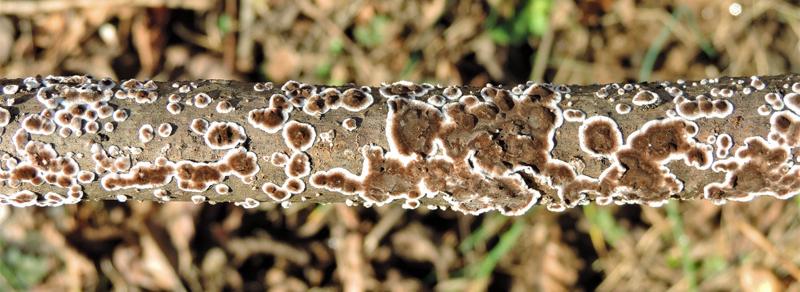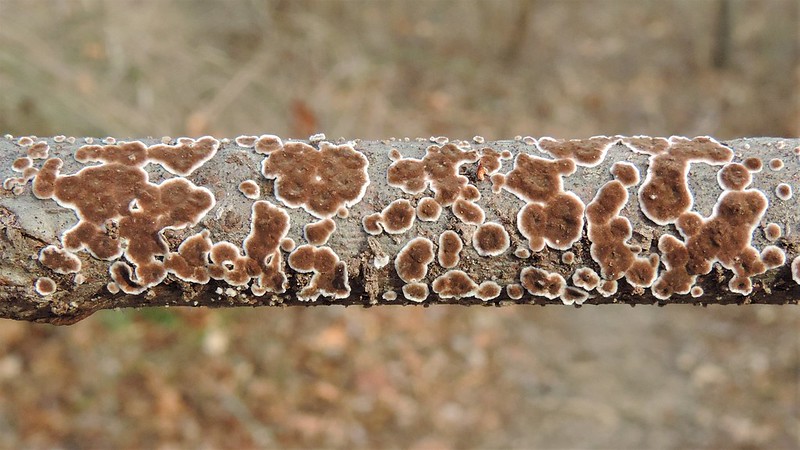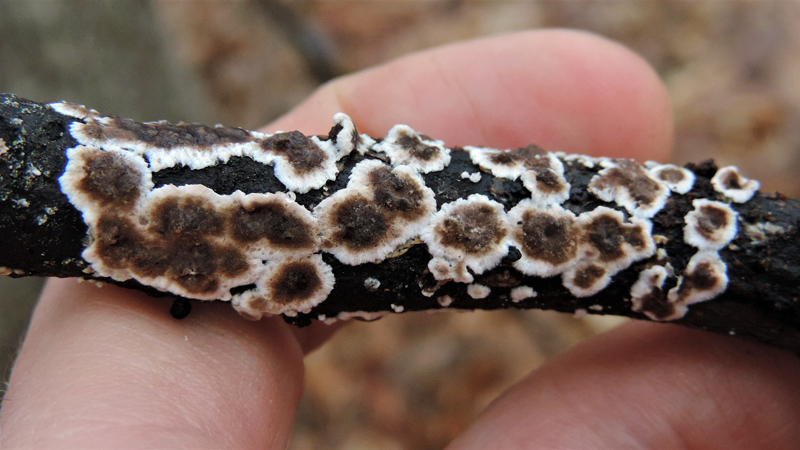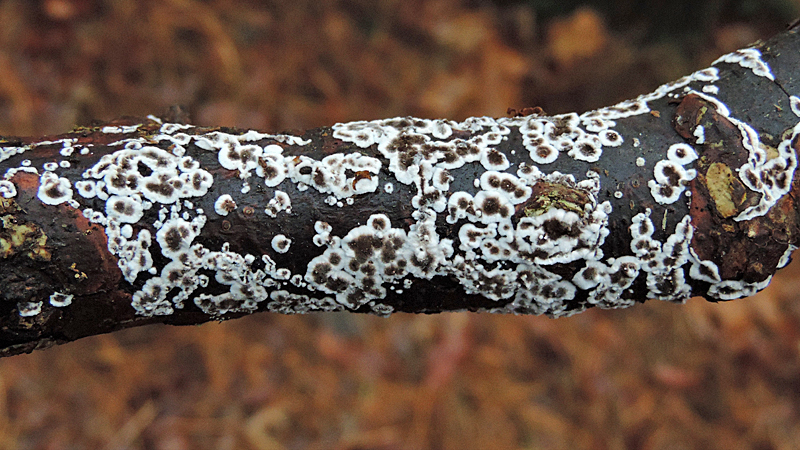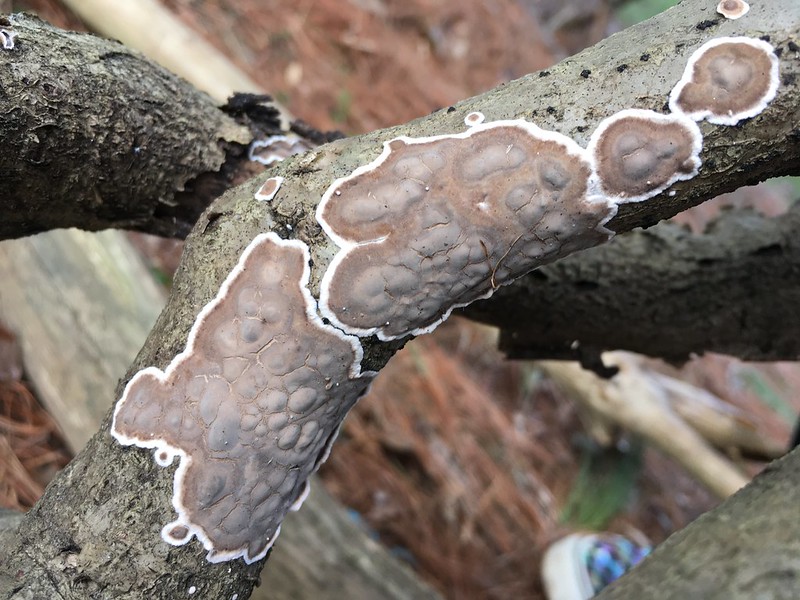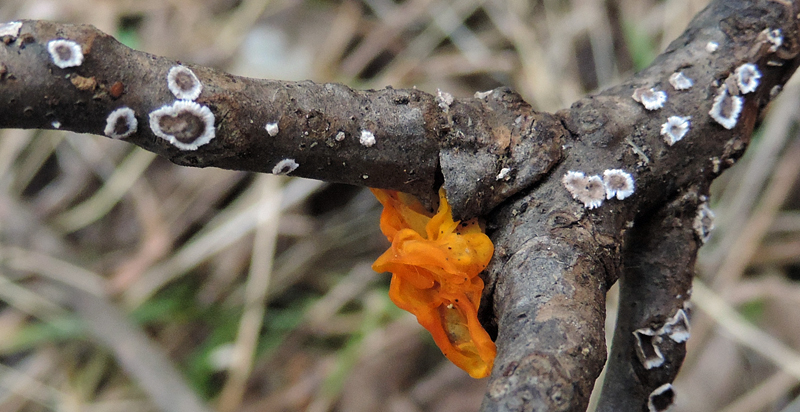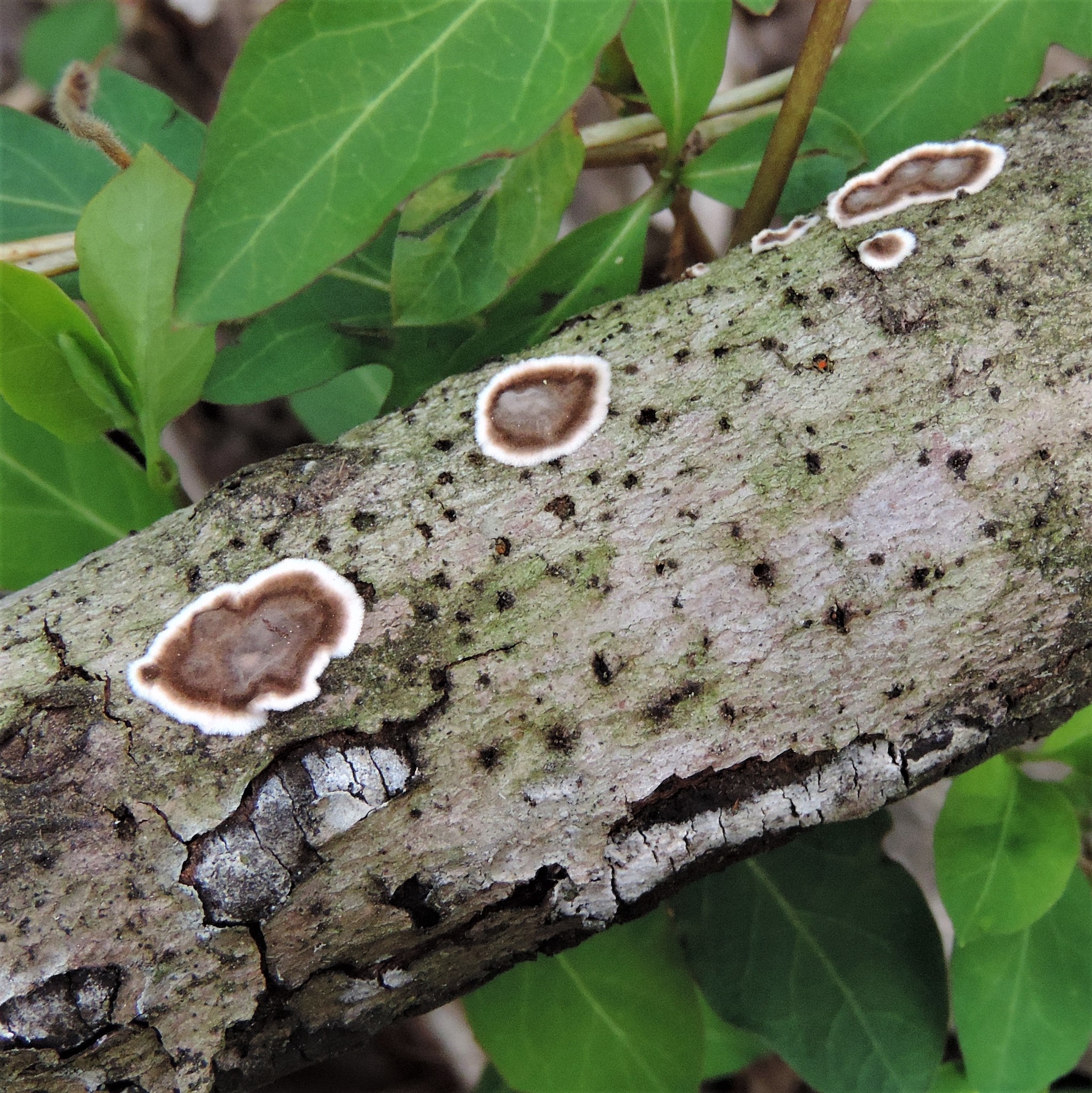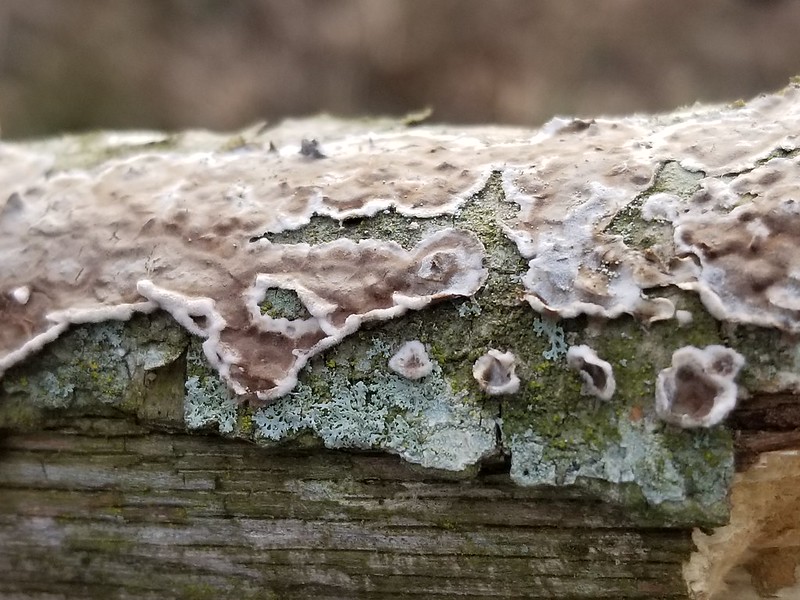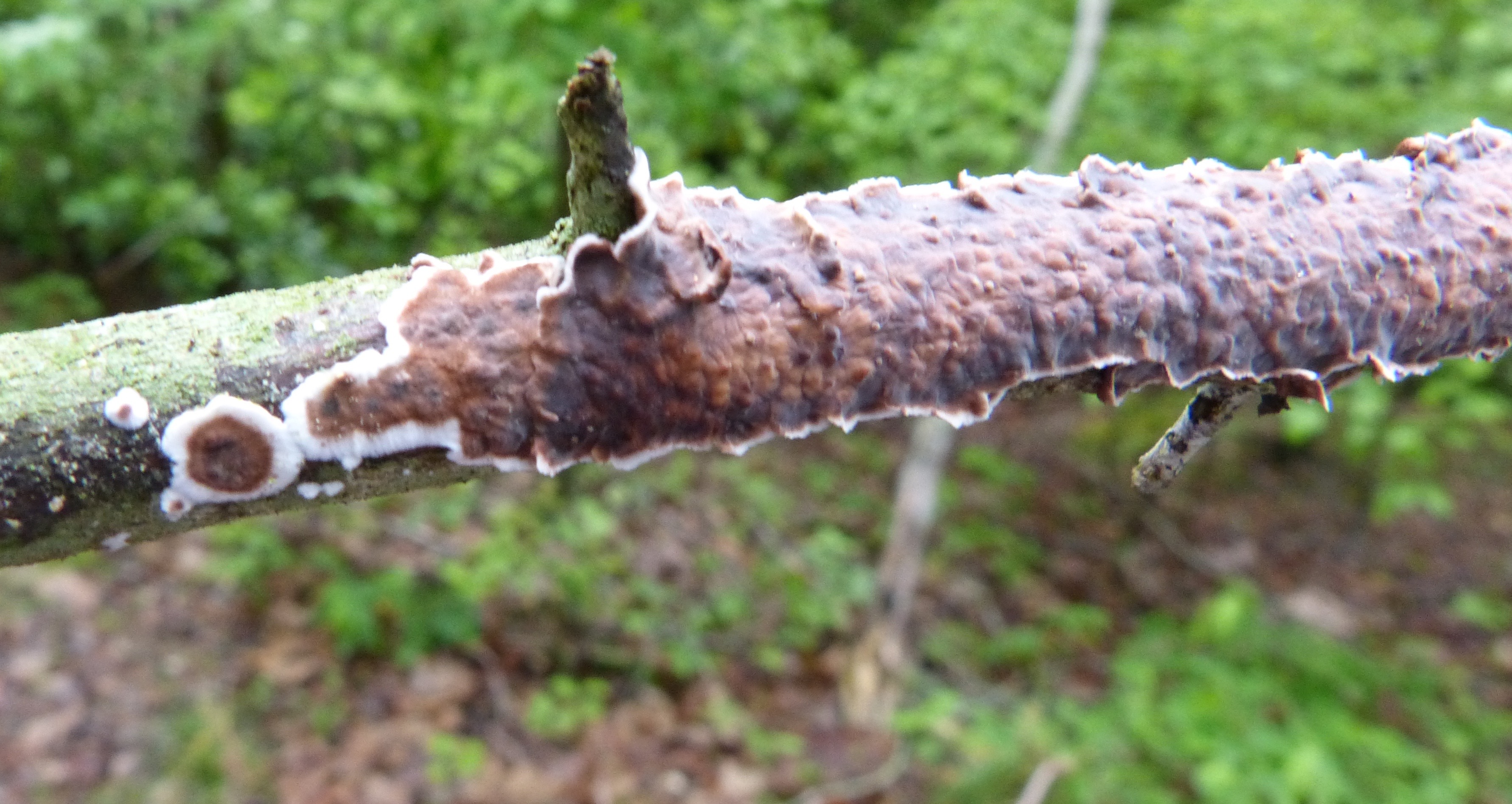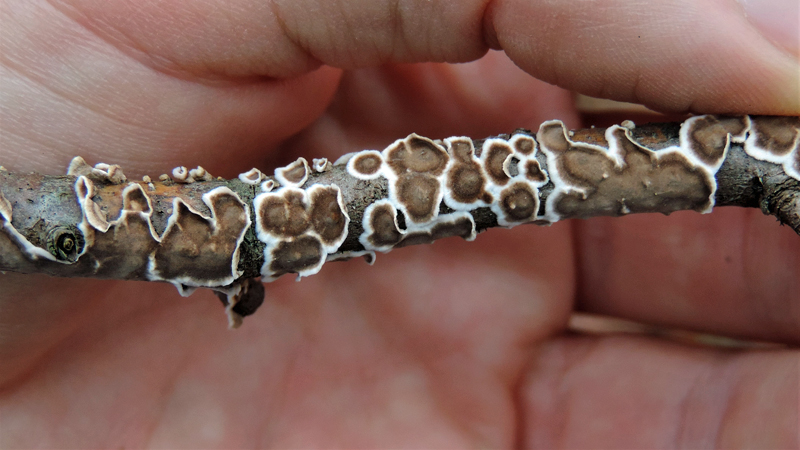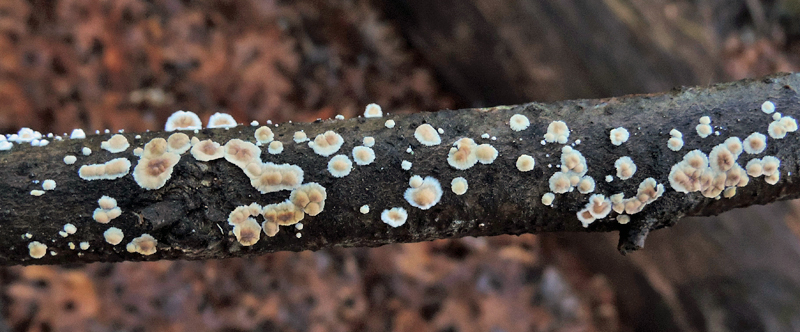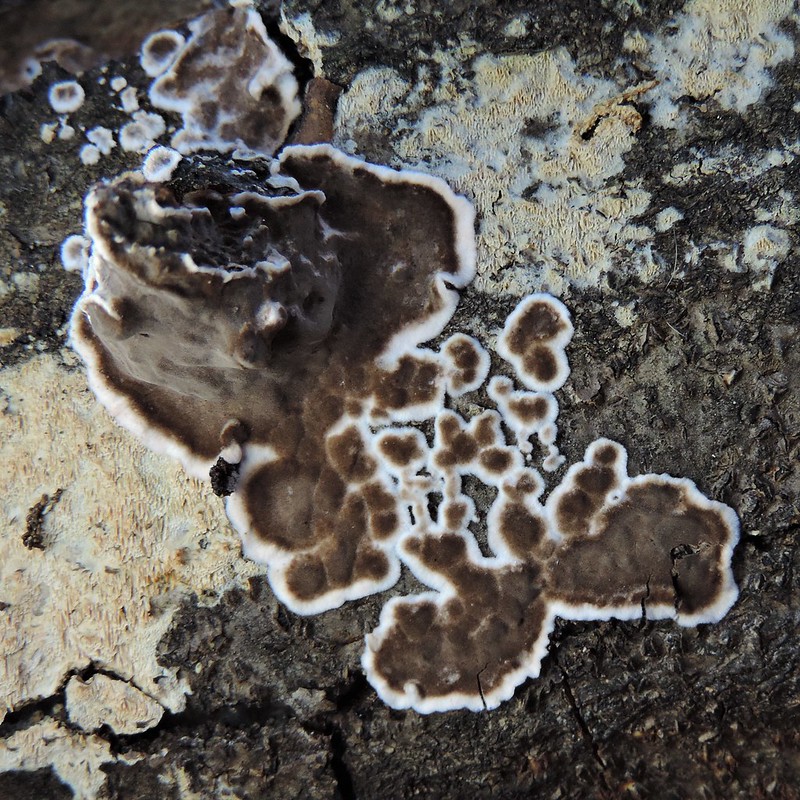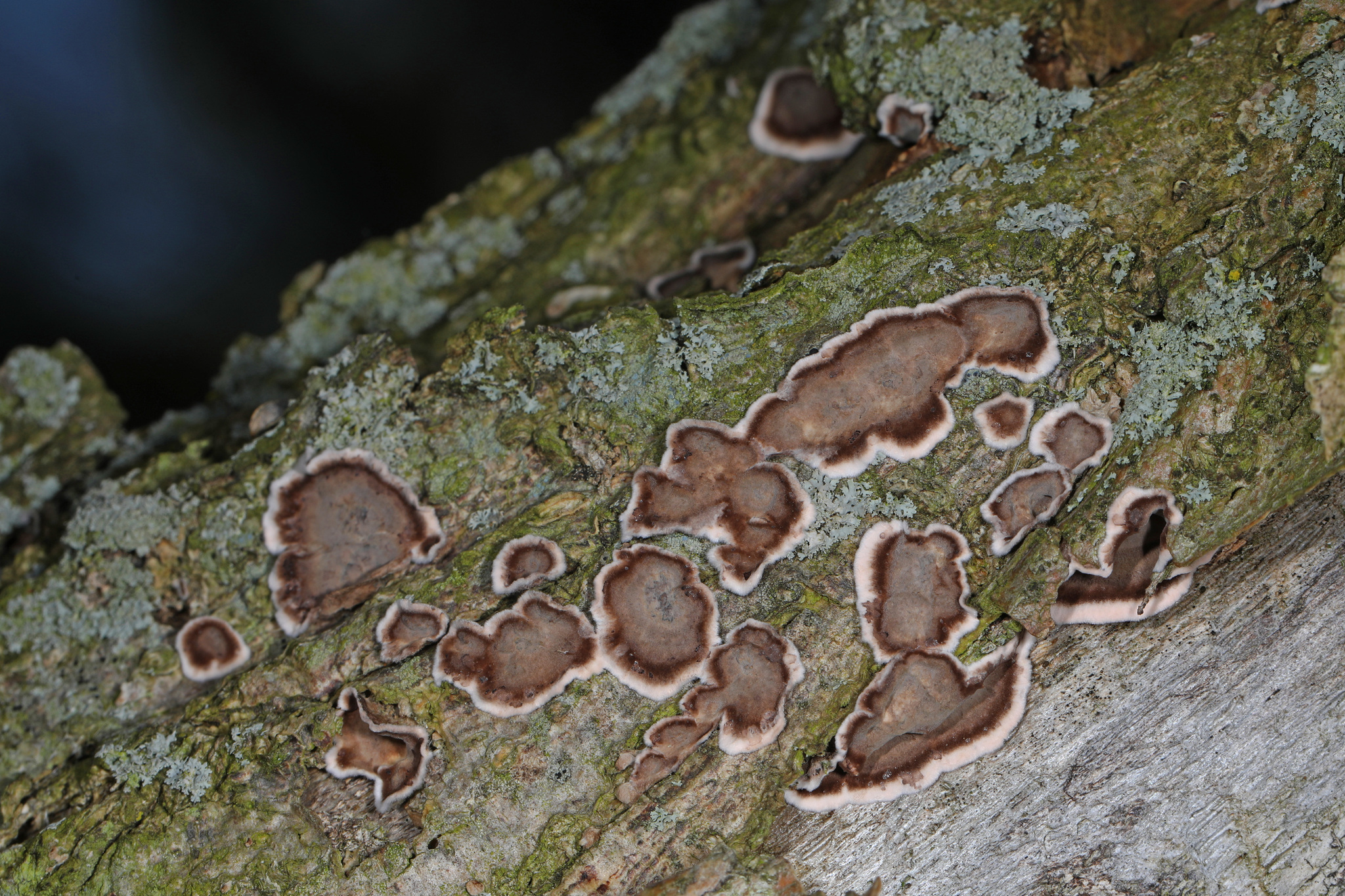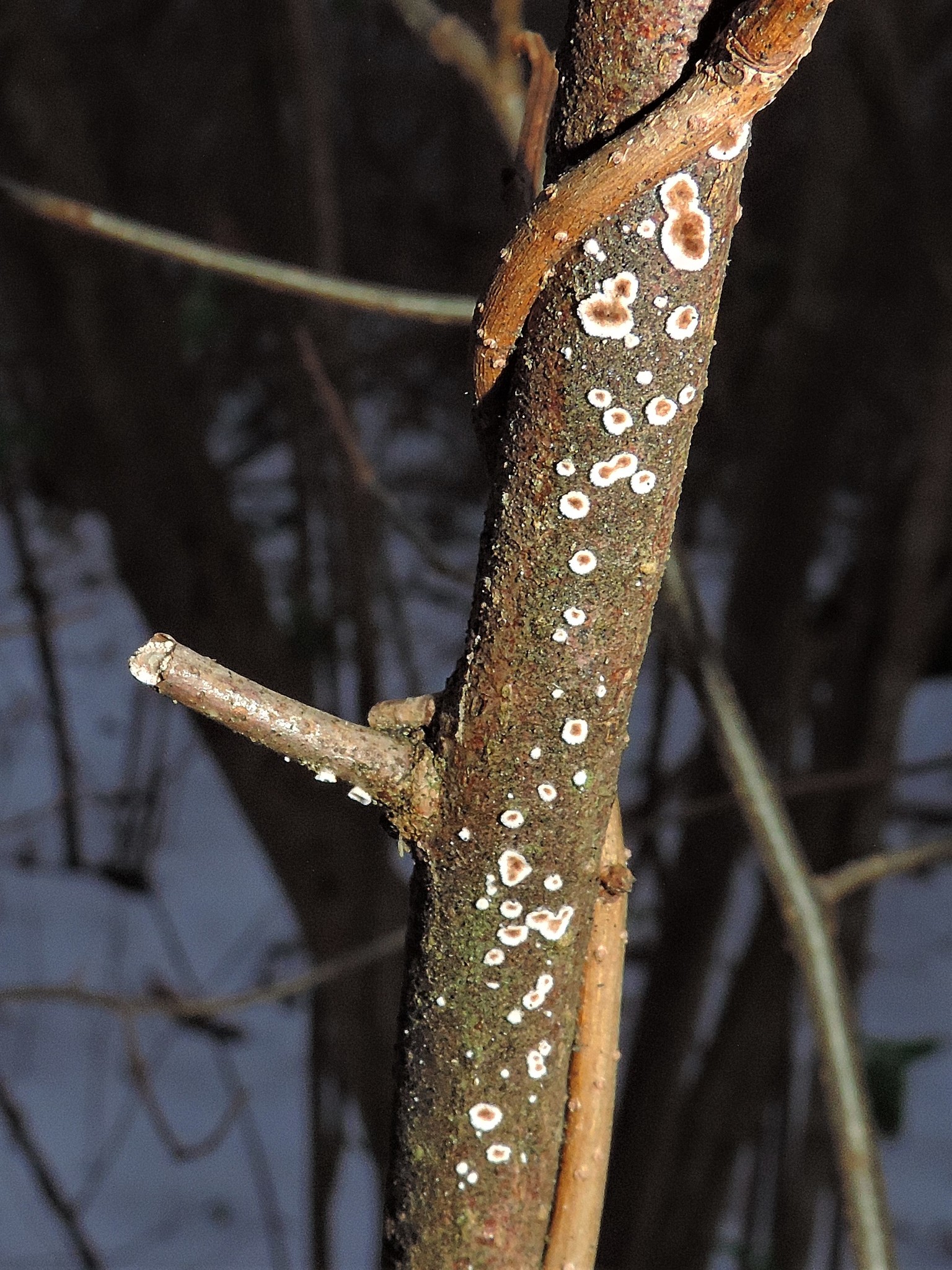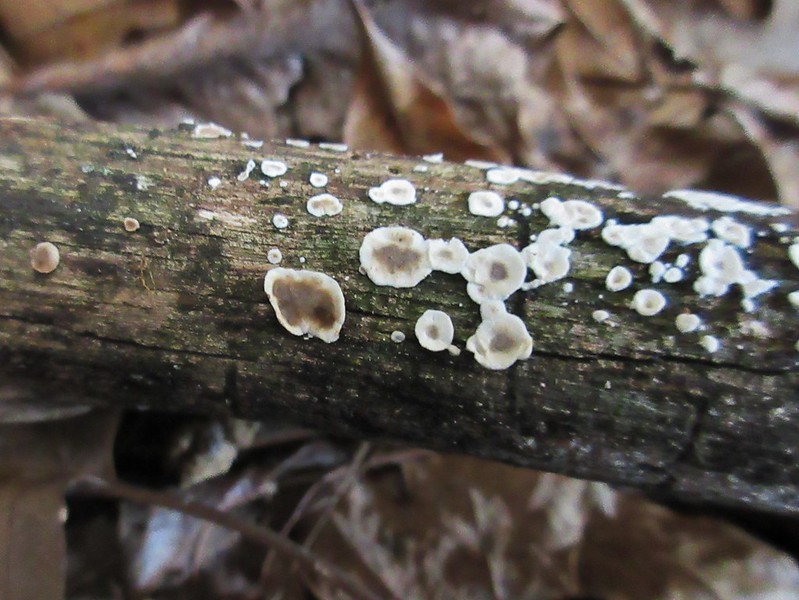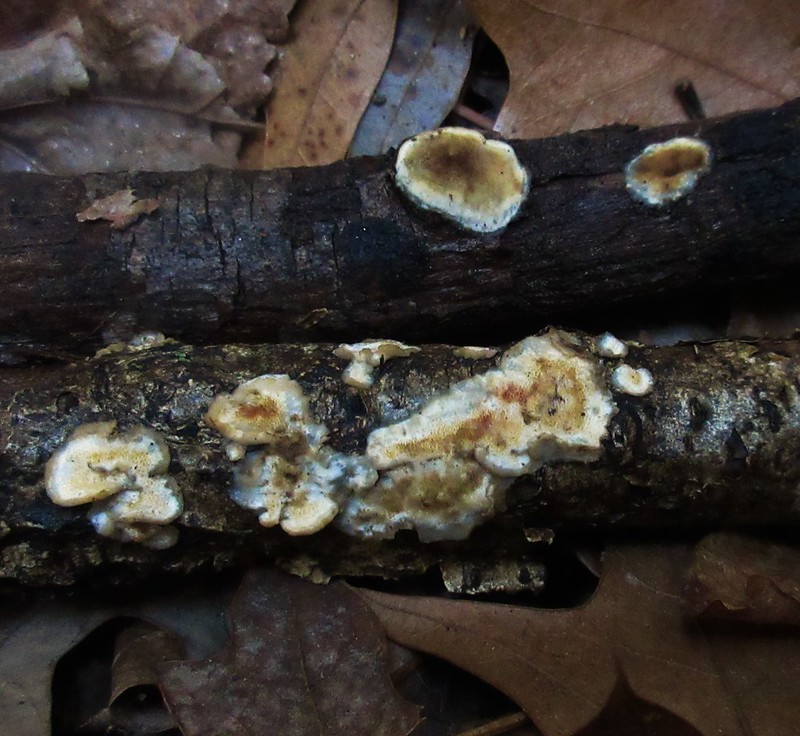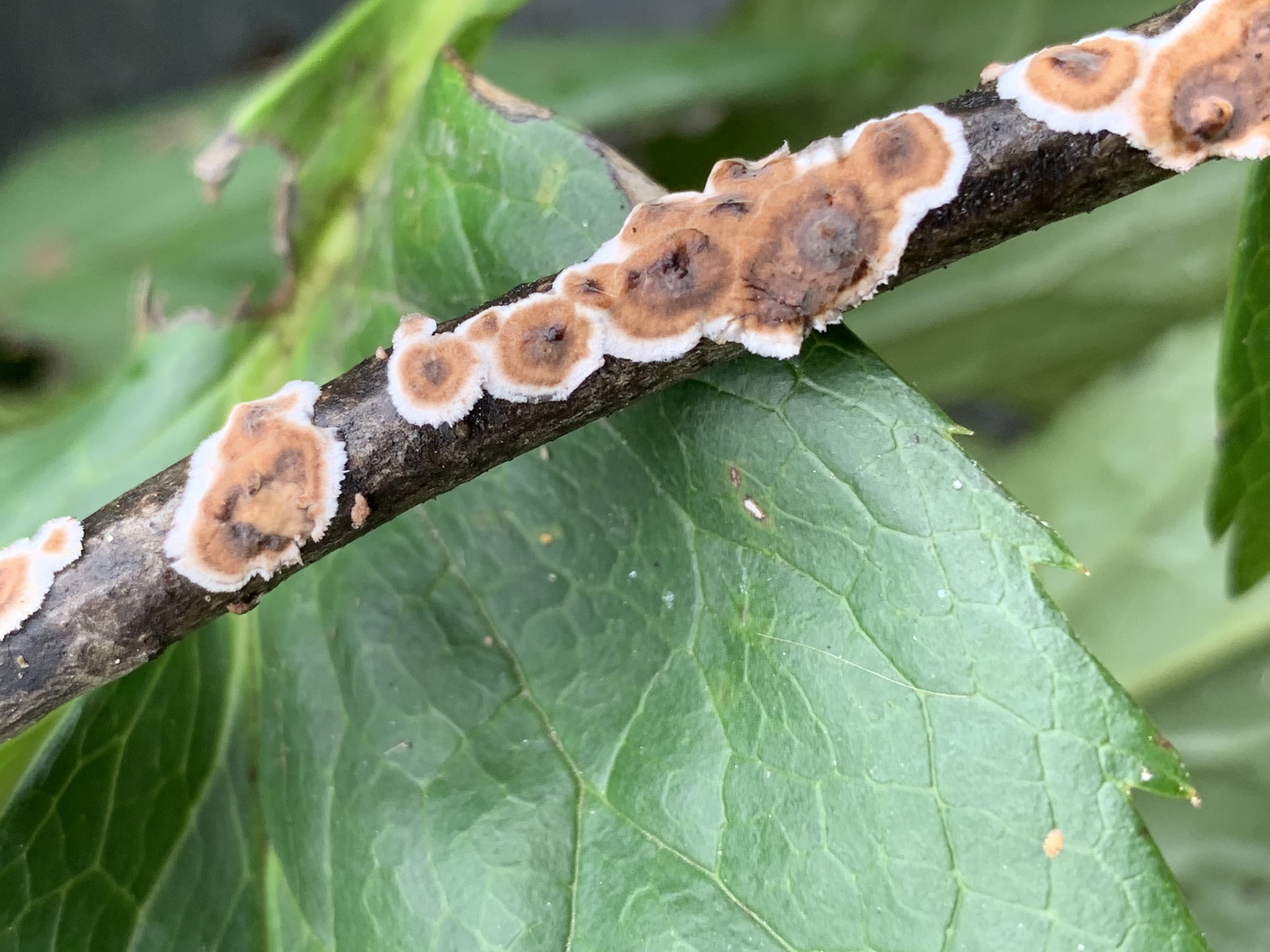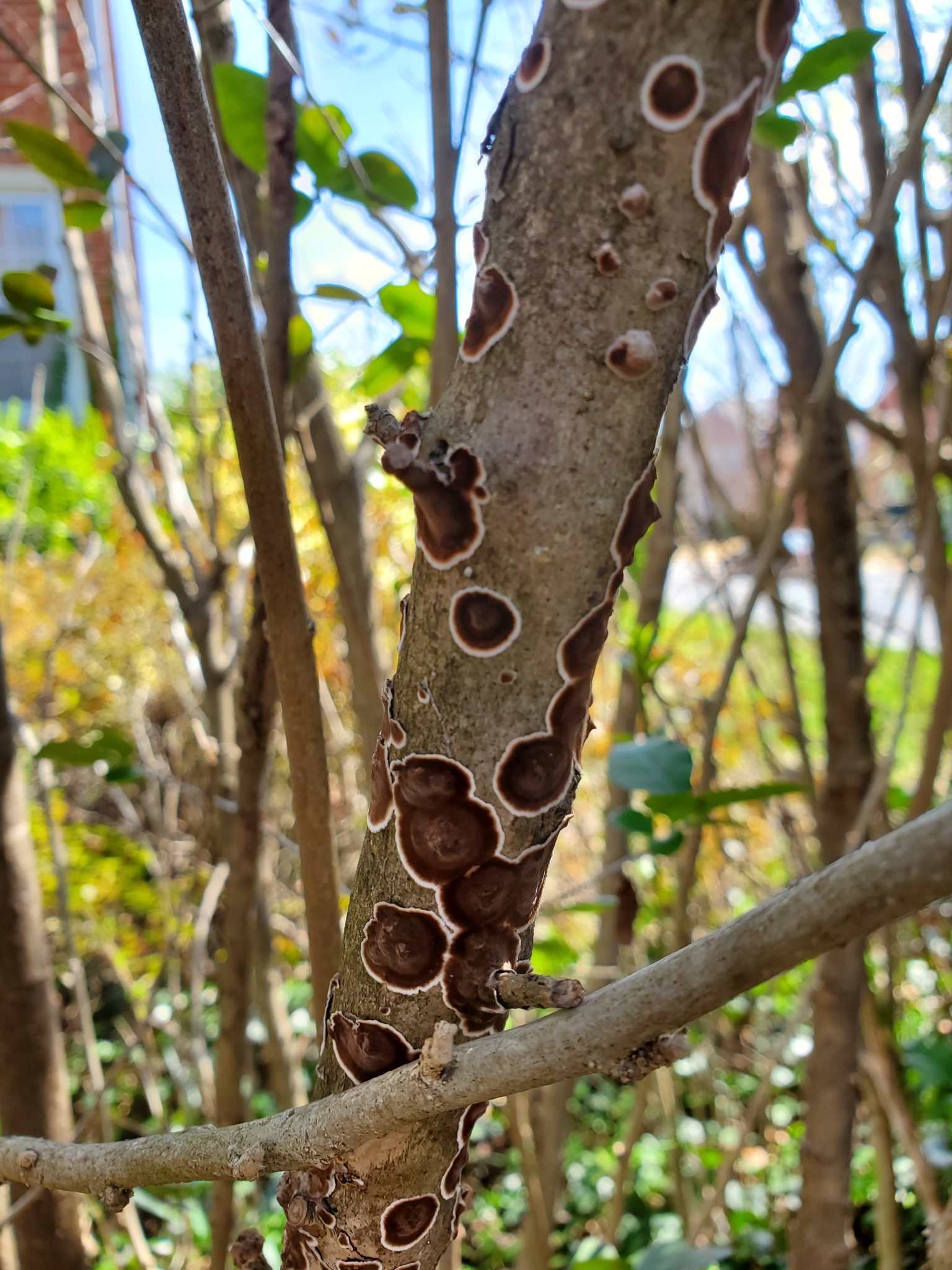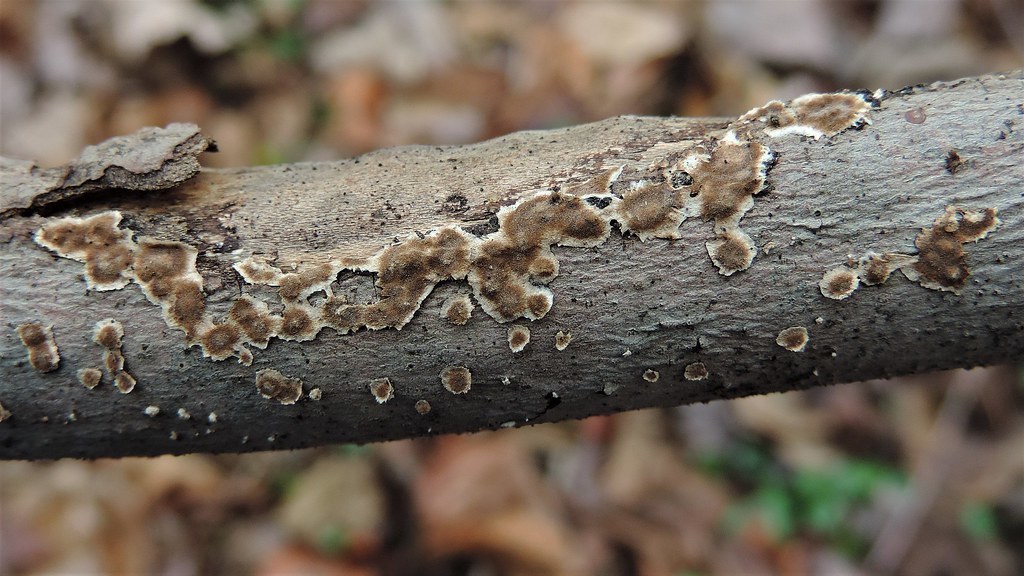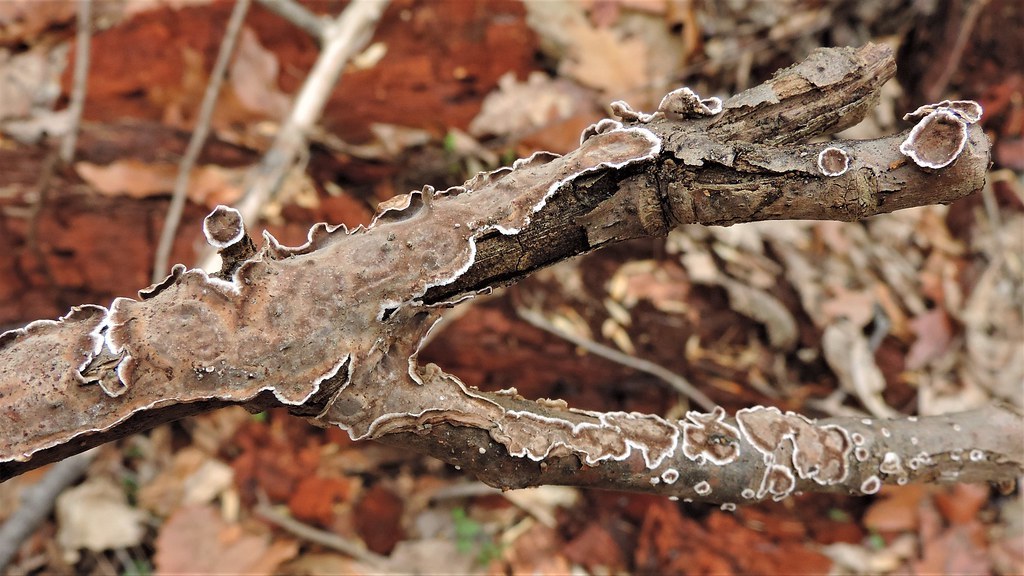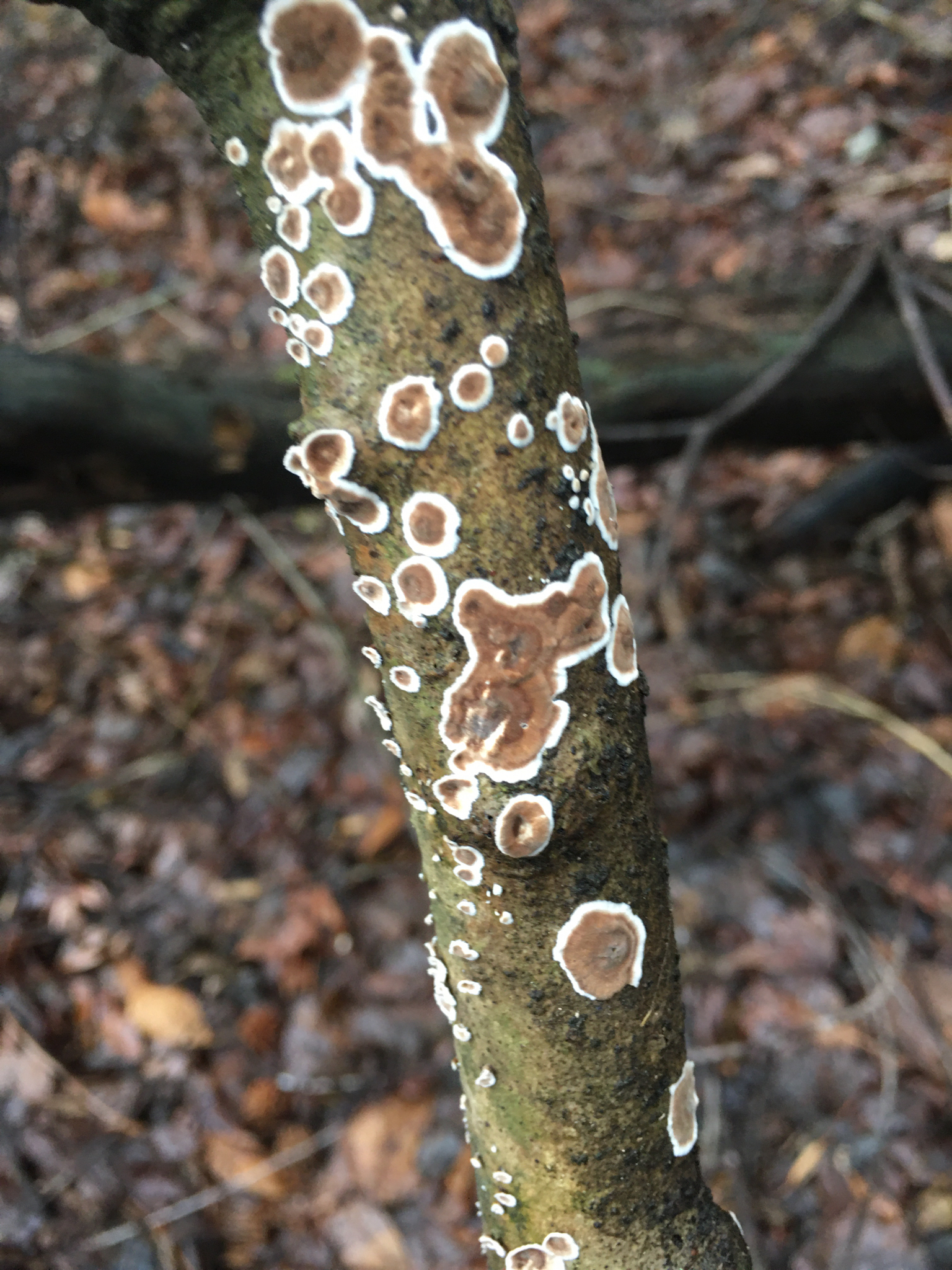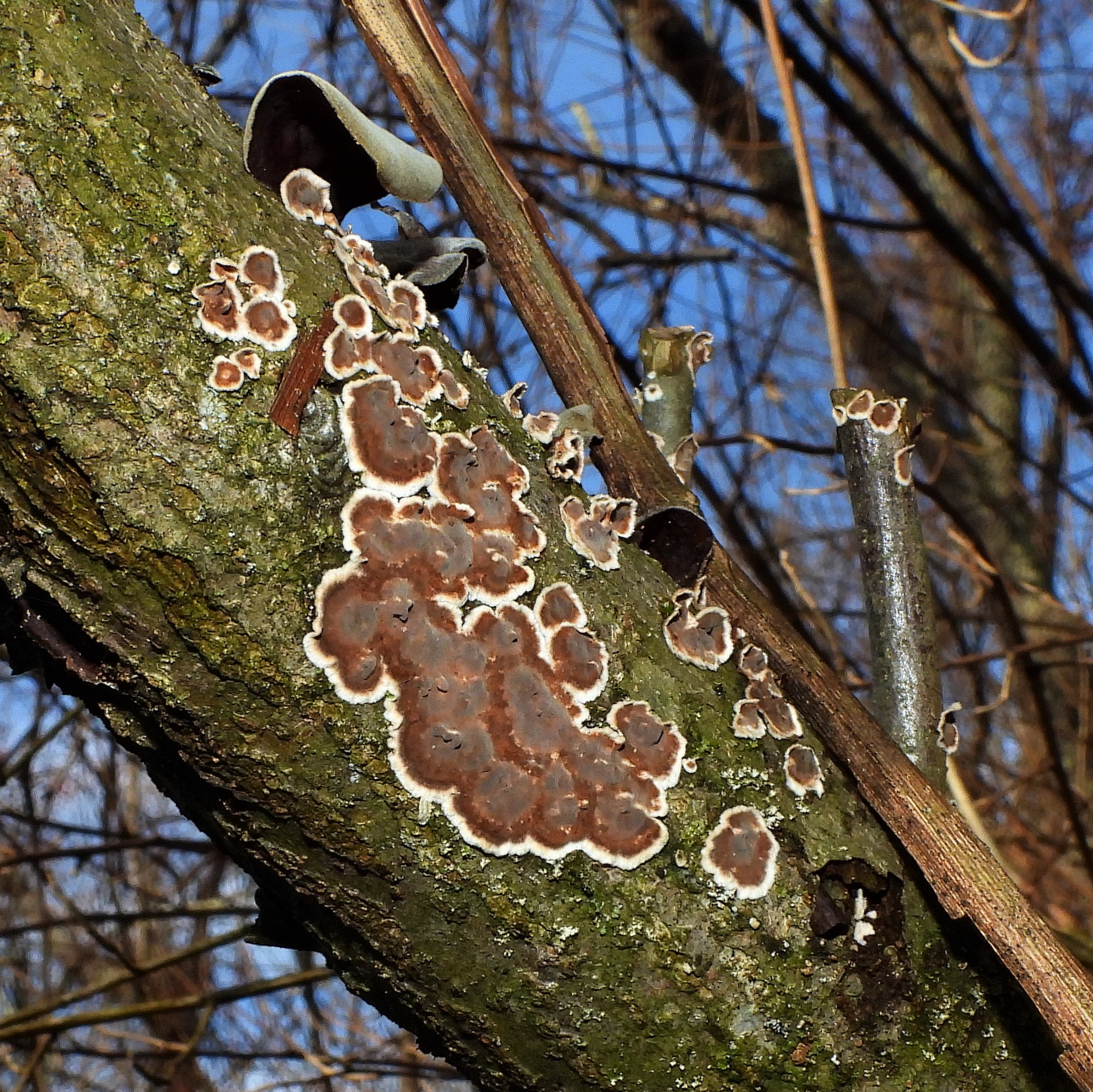Map Snapshot



















142 Records
Status
Crust of individual fruiting bodies often fused; on fallen hardwood branches and logs.
Description
Red-brown vaguely circular fruiting bodies with white hairy edges, often fusing into larger patches. In age, color fades and white edges becomes less obvious.
Relationships
Species of this genus are parasitized by Witches Butter (Tremella mesenterica). Because the fruiting bodies of the parasite arise from the Peniophora mycelium, only infrequently are the fruiting bodies of the two visible at the same time. (J. Solem, pers. comm.)
Seasonality Snapshot
Source: Wikipedia
| Peniophora albobadia | |
|---|---|

| |
| Scientific classification | |
| Domain: | Eukaryota |
| Kingdom: | Fungi |
| Division: | Basidiomycota |
| Class: | Agaricomycetes |
| Order: | Russulales |
| Family: | Peniophoraceae |
| Genus: | Peniophora |
| Species: | P. albobadia
|
| Binomial name | |
| Peniophora albobadia | |
| Synonyms[1] | |
| |
Peniophora albobadia is a species of crust fungus in the family Peniophoraceae.
Taxonomy
[edit]First described scientifically by Lewis David de Schweinitz in 1822,[2] it was transferred to the genus Peniophora by Jacques Boidin in 1961.[3] It is commonly found in the United States.[4][5]
Etymology
[edit]The species epithet is derived from albo-, white, and badi- meaning reddish-brown, the epithet accurately describing the vivid contrast between the fertile area and the margin.[6]
The common name, giraffe spots, was coined by a member of the New York Mycological Society, based on specimens found during surveys of the boroughs of New York City.[6]
Description
[edit]The fruiting body is 1–12 centimetres (1⁄2–4+1⁄2 in) across, with brown zones in the center and a fuzzy white margin.[7]
Similar species
[edit]A similar-looking species Duportella malenconii has brown caps that peel away. There are few other lookalikes in North America.[7]
Ecology
[edit]It is a saprobic fungus, forming spreading crusts on the bark of decaying twigs and fallen branches of many hardwood species.
References
[edit]- ^ "GSD Species Synonymy: Peniophora albobadia (Schwein.) Boidin". Species Fungorum. CAB International. Retrieved 2014-02-18.
- ^ von Schweinitz LD. "Synopsis fungorum Carolinae superioris". Schriften der Berlinische Gesellschaft Naturforschender Freunde (in Latin). 1: 20–131 (see p. 108).
- ^ Boidin J. (1961). "Hétérobasidiomycètes saprophytes et Homobasidiomycètes résupinés: VIII. – Peniophora Cke á dendrophyses (Deuxième contribution)". Revue de Mycologie (in French). 26: 153–72.
- ^ "MyCoPortal Collection Search Parameters". www.mycoportal.org. Retrieved 7 September 2024.
- ^ "Giraffe Spots (Peniophora albobadia)". iNaturalist.org. Retrieved 2019-04-18.
- ^ a b "Peniophora albobadia". www.messiah.edu. Retrieved 2022-10-24.
- ^ a b Audubon (2023). Mushrooms of North America. Knopf. p. 150. ISBN 978-0-593-31998-7.
